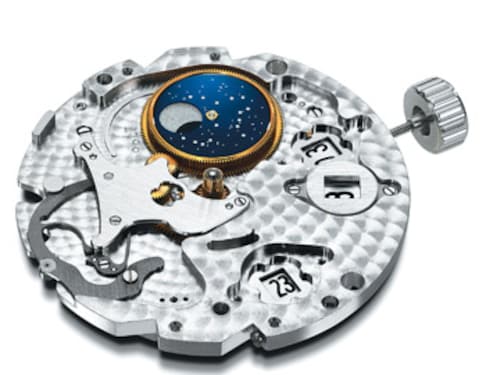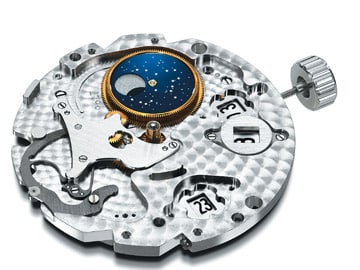The Ever-Evolving Business of Swiss Watches
The mechanical watch segment is seeing the beginning of a major disruption


Gangbusters’ isn’t a word you would use in the same sentence as ‘Swiss’. Yet, the former is probably the best adjective to describe the growth of the Swiss watch industry in recent times.
After growing at 22 percent in 2010 (albeit from a lower base following the global economic slowdown in 2008 and 2009), Swiss watch exports were up another 19.2 percent in 2011 to over $20 billion.
To put that in perspective, Switzerland’s GDP has fluctuated between minus 1.88 percent and 3.67 percent for the last 20 years. The demand for established Swiss watch brands is so strong, especially in Asia, that many watchmakers can’t keep up with supply. Though the Swiss accounted for merely 2.5 percent of the 1.2 billion pieces exported globally in 2011, they command over 50 percent of the revenue earned.
It almost sounds too good to be true.
The Icebergs Lurketh
A major disruption has already started taking hold in the mechanical watch segment. ETA and Nivarox, the biggest manufacturers of mechanical movements, hairsprings and regulating mechanisms, will begin cutting down supplies to watch brands not owned by the Swatch Group. Both of them are, of course, owned by the Swatch Group and control between 75 to 90 percent of the market for the critical components that go into making a mechanical watch.  With such a monopoly, every percentage point reduction in supplies will hurt a Swatch competitor. In 2012 ETA will supply only 85 percent of the components to non-Swatch brands compared to what it did in 2010.
With such a monopoly, every percentage point reduction in supplies will hurt a Swatch competitor. In 2012 ETA will supply only 85 percent of the components to non-Swatch brands compared to what it did in 2010.
“If you don’t have your own movement, then you will not survive in the watch industry for long. Ten years ago that was not the case, because just the ETA movement was enough,” says Antonio Calce, the CEO of premium and independent watch brand Corum.
The ‘movements crisis’, as it is being called, is a massive inflection point for the entire industry. In the short to medium term it will allow Swatch to increase its market share simply by curtailing the availability of components to its biggest competitors.
But Swatch’s biggest competitors aren’t exactly sitting ducks. Almost every major brand has already embarked on a three-point agenda that involves maintaining cordial relations with Swatch so their component supplies aren’t shut off abruptly diversifying their supplier base by sourcing from other component makers and most importantly, setting up their own component manufacturing operations.
“The first thing everyone talks about today is proprietary movements,” says Yashovardhan Saboo, the head of India’s largest watch retailer Ethos. “And if something is talked about repeatedly in the media, it will soon become the reality.”
Take Tag Heuer. The company also sources alternatives from multiple suppliers including ETA, Sellita, Zenith and even one-time arch enemy—the Japanese—through Seiko! In parallel, it is investing heavily to double its in-house movement manufacturing capacity from 50,000 annually. Last year its parent company LVMH bought independent Swiss dial maker ArteCad to add more muscle to the vertical manufacturing capabilities of its brands.
“We will work with independent suppliers who intend to remain independent and keep creating significant internal capacity as well. We don’t have a magic number but the ratio will be part internal and part external so that we are not dependent on just one supplier,“ says Jean-Christophe Babin, the CEO of Tag Heuer.
The same strategy is being replicated across other well-known brands, like Breitling, Corum, Hublot and Chopard.
Meanwhile, halfway across the world the Japanese, pastmasters of industrial and precision manufacturing, are using this crisis to inveigle themselves into long-term component partnerships with leading Swiss brands. This explains Seiko’s tie-up with Tag Heuer and Citizen’s March 2012 acquisition of Swiss company Prothor Holding which owns movement and component makers La Joux-Perret and Prototec, respectively.
While large Swiss and Japanese brands may be able to cough up tens of millions of dollars to set up or buy movement manufacturing facilities, the game is very different for smaller independents.
Bereft of deep pockets or large volumes (that get better prices from suppliers), many of them will get squeezed severely. Some will be forced to sell out while others will have to shut down.
Only the Paranoid Survive
The most radical innovation happens by young and independent watchmakers who aren’t bound by heritage. Take for instance the way newcomer brand Hyt tells time on its very first watch, the H1—it pushes coloured water around a dial using micro pistons and bellows to tell the time.
Could a Rolex ever come up with this? Of course not. (It’s another matter that Rolex is prized for exactly being the conservative and solid brand that it is.)
Beyond a certain point the young brands will find it tough to grow without additional funding on advertising, distribution or industrial manufacturing. The component squeeze from Swatch will make it even more tough. As a result, many have no option but to sell out.
With big daddies Swatch and Richemont having their hands full with a comprehensive set of brands, acquisitions in recent times have come from other luxury brands who want to position themselves as serious watchmakers or by investors and brands from Asia.
So, La Fabrique du Temps got acquired by Louis Vuitton Girard-Perregaux and JeanRichard by the PPR Group. Bulgari simultaneously acquired Daniel Roth & Gerald Genta China Haidian, a company that controls over 40 percent of the Chinese market, bought Eterna and DKSH, a trading house, bought Maurice Lacroix.
Call it ‘Schumpeter’s gale’, or, the cycle of creative destruction.
First Published: Jul 06, 2012, 06:34
Subscribe Now